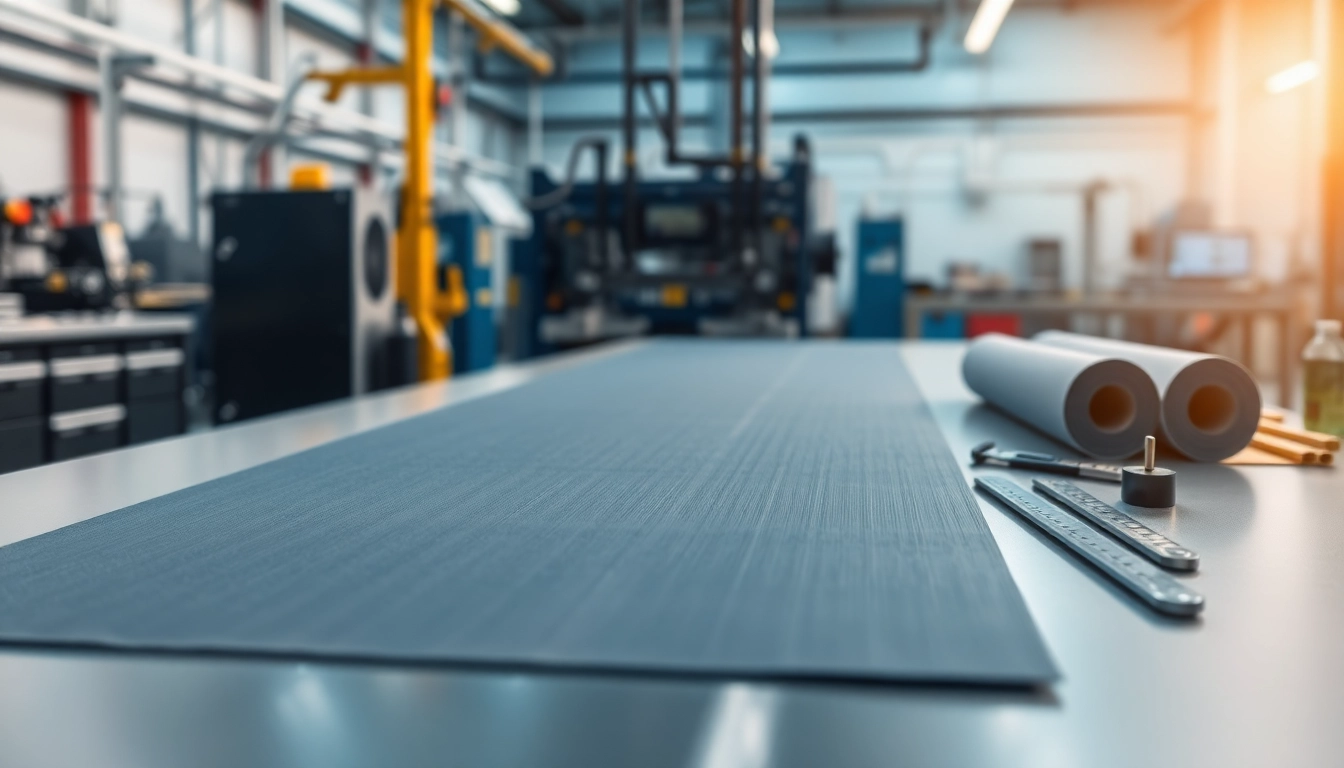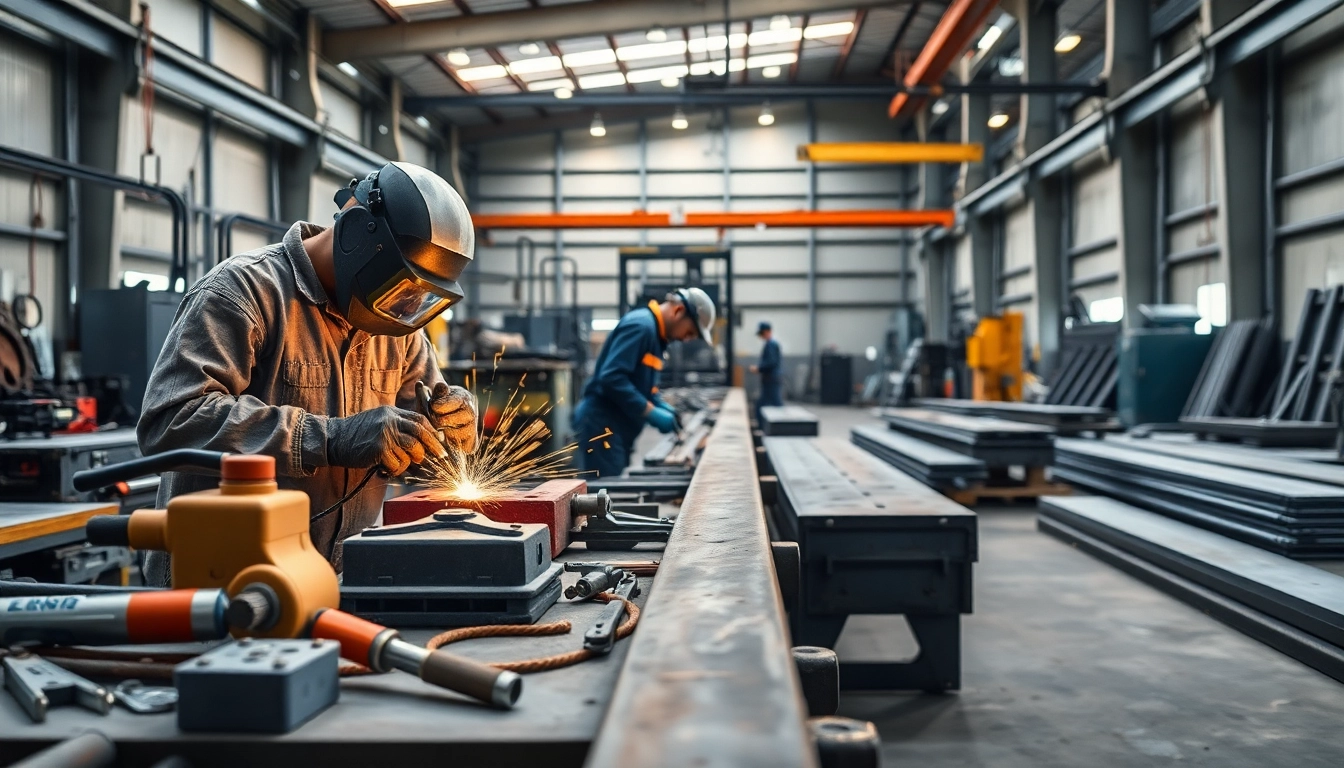What are Epoxy Prepregs?
Definition and Composition of Epoxy Prepregs
Epoxy prepregs are advanced composite materials made from a reinforcement fabric that is pre-impregnated with a liquid epoxy resin system. This preparation process involves saturating fibers, such as carbon or fiberglass, with a thermosetting resin that is partially cured. The result is a material that maintains its structural integrity and offers significant advantages during the manufacturing process. Epoxy prepregs can be stored for extended periods without compromising their quality, making them a reliable option for varied industries, including aerospace, automotive, and construction.
Common Materials Used in Epoxy Prepregs
The primary materials utilized in epoxy prepregs include reinforcement fibers such as:
- Carbon Fiber: Known for its exceptional strength-to-weight ratio, making it ideal for high-performance applications.
- Glass Fiber: Offers good tensile strength and thermal resistance, commonly used where cost is a consideration.
- Aramid Fiber: Contributes to increased toughness and impact resistance, often utilized in protective gear and high-stress environments.
The resin component typically includes an epoxy formulation that cures through a heating process, providing durability, chemical resistance, and thermal stability. The combination of these materials results in a composite that performs favorably in a variety of conditions.
Process of Creating Epoxy Prepregs
The production of epoxy prepregs involves several critical steps:
- Pre-Impregnation: Layers of fabric are passed through a heated resin bath, allowing the epoxy resin to saturate the fibers sufficiently.
- Partially Curing: The impregnated layers are then subjected to controlled heat to partially cure the resin, ensuring that it retains a tacky surface for further processing.
- Cooling and Cutting: Once cured, the sheets are cooled and cut into specific sizes for storage, typically vacuum-sealed to prolong shelf life.
This meticulous process ensures that the final product meets strict performance specifications required for its intended application.
Advantages of Epoxy Prepregs in Manufacturing
High Strength and Lightweight Properties
One of the most significant benefits of epoxy prepregs is their impressively high strength-to-weight ratio. This quality makes them an invaluable resource for industries where weight savings lead to improved performance, such as in aerospace engineering and automotive manufacturing. For instance, a reduction in weight can enhance fuel efficiency and overall speed. The lightweight nature of epoxy prepregs allows manufacturers to create strong components without the penalties usually associated with heavier materials.
Enhanced Performance in Various Environments
Epoxy prepregs exhibit outstanding thermal, chemical, and moisture resistance, enabling them to perform exceptionally well in challenging environments. These materials are not only resistant to degradation from mechanical wear but also withstand harsh chemicals that could compromise other materials. Their ability to maintain structural integrity in high-temperature situations makes epoxy prepregs particularly suitable for applications in the automotive and aerospace sectors, where components may be exposed to extreme conditions.
Cost-Effectiveness and Efficiency in Production
Though the initial investment in epoxy prepregs might be higher than traditional materials, the savings during manufacturing often offset these initial costs. The use of epoxy prepregs simplifies the manufacturing process, reducing waste and minimizing the number of steps and labor required compared to other composite manufacturing methods like wet lay-up or infusion techniques. Additionally, because the resin is pre-impregnated, the control over resin content means that less material is wasted, leading to more efficient production overall.
Applications of Epoxy Prepregs
Usage in Aerospace and Defense Industries
The aerospace industry has been a pioneer in the adoption of epoxy prepregs, leveraging their weight-saving properties and structural strength to enhance aircraft performance. Composite wings, fuselages, and other critical components are often crafted from these materials. Their resistance to fatigue and environmental stressors makes them ideal for military applications as well. Aircraft manufactured with epoxy prepregs can achieve greater fuel efficiency and extended service life, enhancing mission capabilities in defense scenarios.
Role in Automotive Engineering
Epoxy prepregs are gaining traction in the automotive sector, where manufacturers are increasingly focused on reducing vehicle weight to improve fuel efficiency and performance. These materials are used in a variety of automotive components, such as body panels, chassis parts, and structural reinforcements. The integration of epoxy prepregs allows for more innovative designs that meet rigorous safety standards while achieving significant weight reductions, enabling electric and hybrid vehicles to perform more efficiently.
Impact on Sporting Goods Production
The sporting goods industry is another area where epoxy prepregs have made a significant impact. From high-performance bicycles to advanced medical prosthetics, the versatility of epoxy prepregs allows for the creation of lightweight yet durable products. The excellent mechanical properties of epoxy prepregs enable manufacturers to create customized solutions tailored to specific sports’ needs, enhancing athletes’ performance while ensuring safety and reliability in the equipment they use.
Installation and Handling Best Practices
Proper Storage Conditions for Epoxy Prepregs
To ensure maximum shelf life and performance of epoxy prepregs, it’s essential to follow recommended storage practices. These materials should be kept at low temperatures, typically below -18 degrees Celsius, to prevent premature curing and maintain their resin functionality. They should also be stored in a dry environment to avoid moisture-related degradation. Proper labeling and inventory management are crucial to track batch numbers and expiration dates, ensuring that product integrity is never compromised.
Steps for Safe Handling During Use
When handling epoxy prepregs, certain safety protocols should be observed:
- Use personal protective equipment (PPE) such as gloves and masks to mitigate exposure to epoxy resin.
- Work in a well-ventilated area to avoid harmful fume inhalation during cutting and application.
- Ensure a clean workspace to reduce contamination risks during the application process.
Following these safety measures can help prevent injuries and maintain a clean working environment.
Recommended Techniques for Application
Applying epoxy prepregs requires specific techniques to ensure optimal performance. Here are key recommendations:
- Heating: Follow the manufacturer’s guidelines for heating and curing epoxy prepregs. Various resins require different curing temperatures and times.
- Lamination: For multi-layer constructions, ensure that the layers are aligned correctly and eliminate any air bubbles that could affect strength.
- Monitoring: Use thermocouples or infrared sensors to monitor the curing process closely, ensuring it reaches the required temperature consistently.
Implementing these techniques not only enhances product quality but also contributes to a more efficient production process.
Future Trends in Epoxy Prepregs Development
Innovations in Epoxy Resin Technology
The future of epoxy prepregs is poised for transformation through ongoing research and development in resin technologies. Innovations are expected to focus on enhancing the thermal resistance and mechanical properties of the resins used. New formulations that include bio-based components are also being explored, in alignment with global sustainability trends. These advancements could offer even better performance while reducing environmental impact, leading to more sustainable manufacturing solutions.
Market Growth and Emerging Industry Needs
The demand for epoxy prepregs is likely to grow significantly across various industries. As sectors like aerospace and automotive continue to prioritize weight reduction and fuel efficiency, the reliance on epoxy prepregs will increase. Emerging industries, such as renewable energy, also present opportunities for these materials, particularly in wind turbine blade manufacturing and composite structures. Market analytics predict a steady rise in usage, reinforced by the innovative applications of epoxy prepregs in new technology sectors.
Sustainable Practices in Prepreg Manufacturing
As sustainability becomes a cornerstone of manufacturing practices, the prepreg industry is evolving to incorporate eco-friendly methods. Manufacturers are increasingly investing in greener production technologies, such as solvent-free processes and the use of recyclable materials. The development of sustainable epoxy resin systems will not only cater to consumer demand for environmentally conscious products but will also potentially reduce costs in production and disposal. The shift towards sustainability is expected to create a competitive edge for companies that prioritize these practices.



